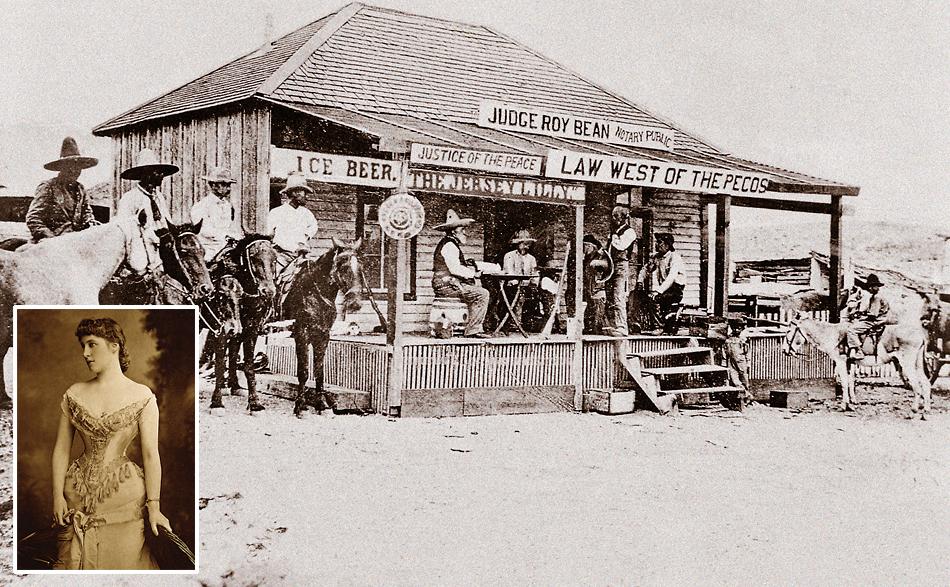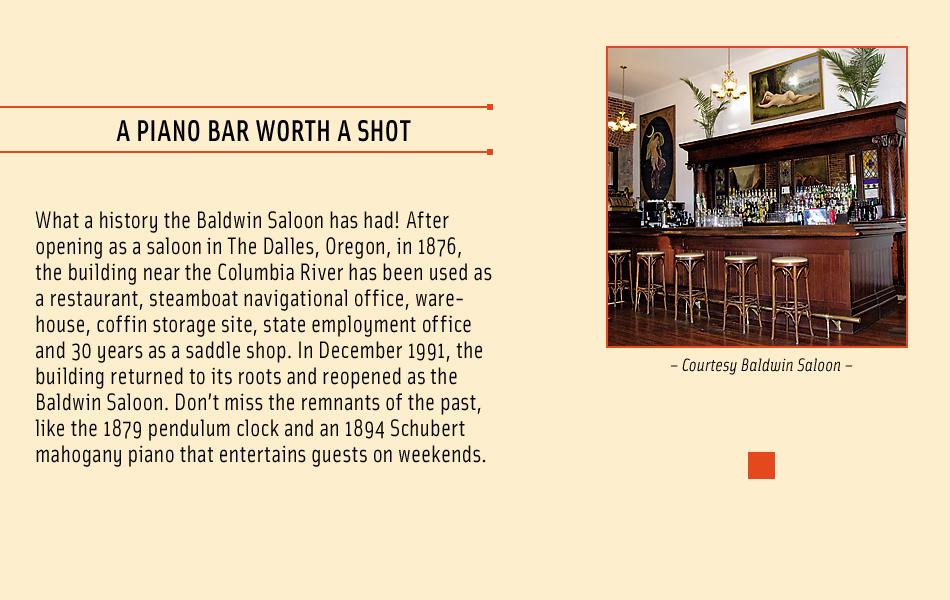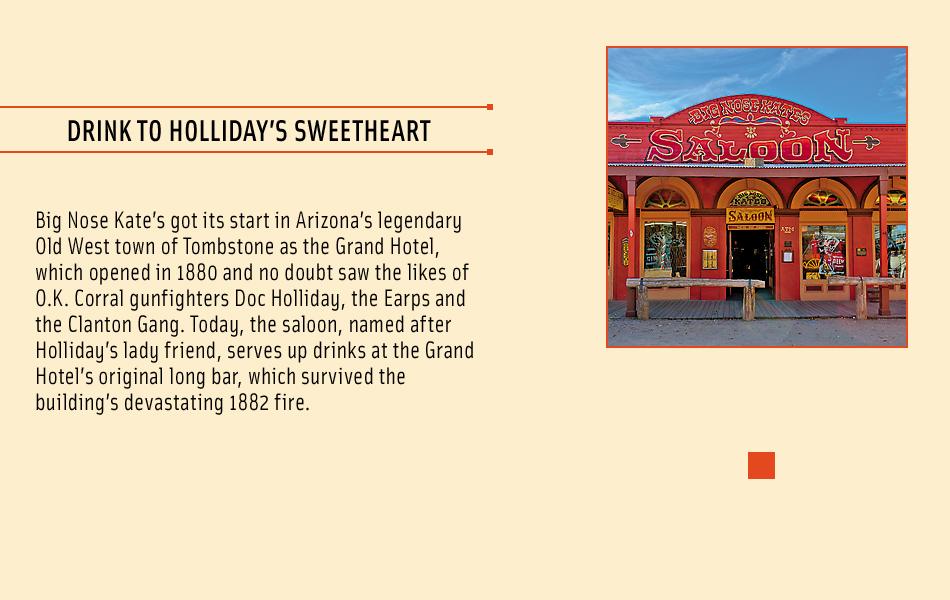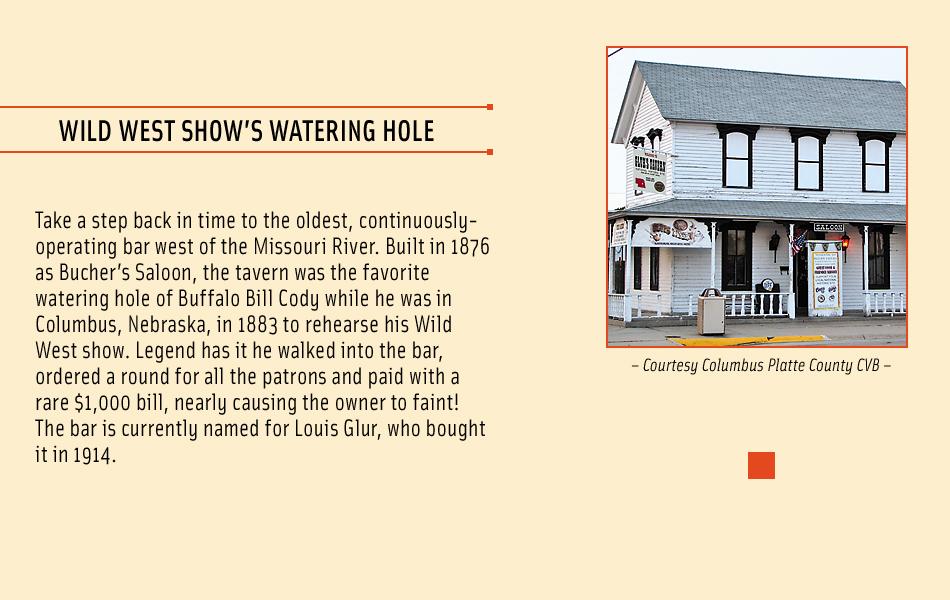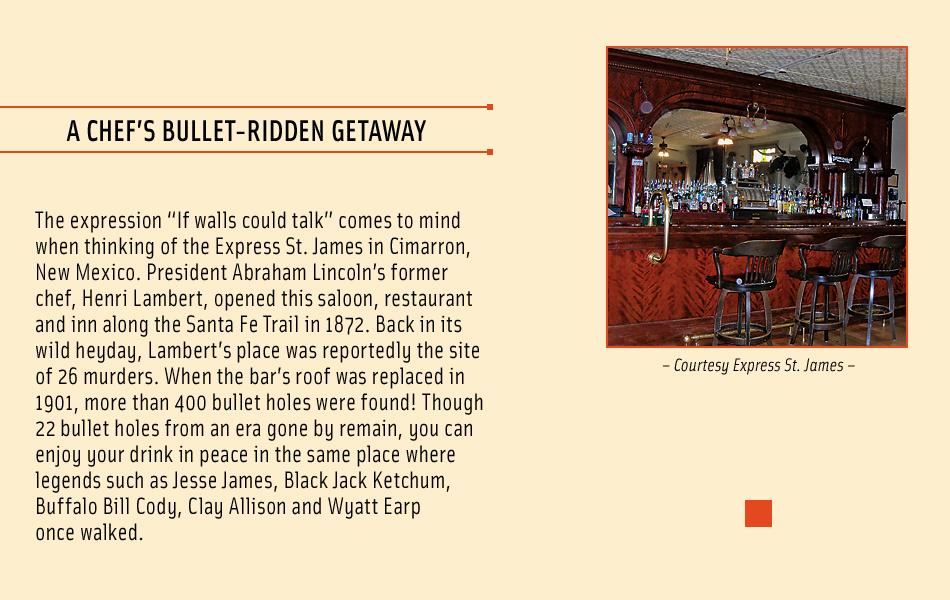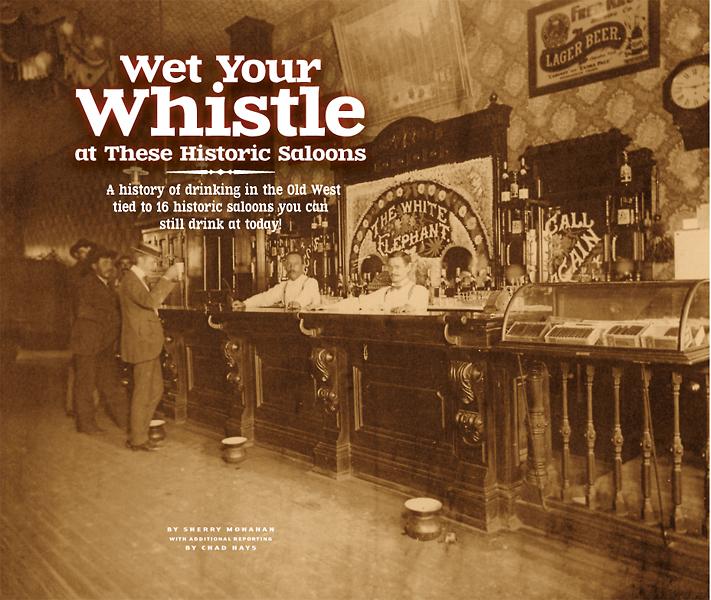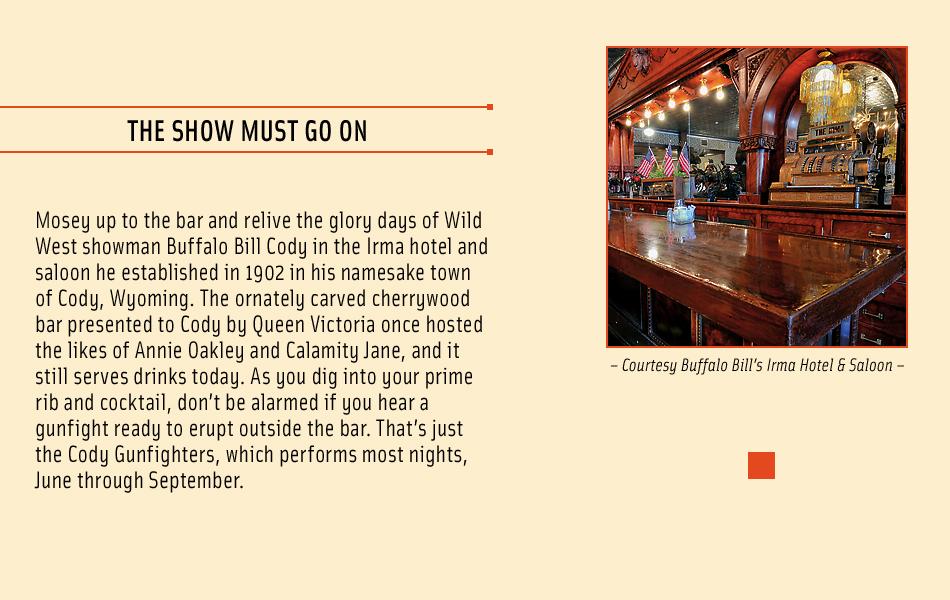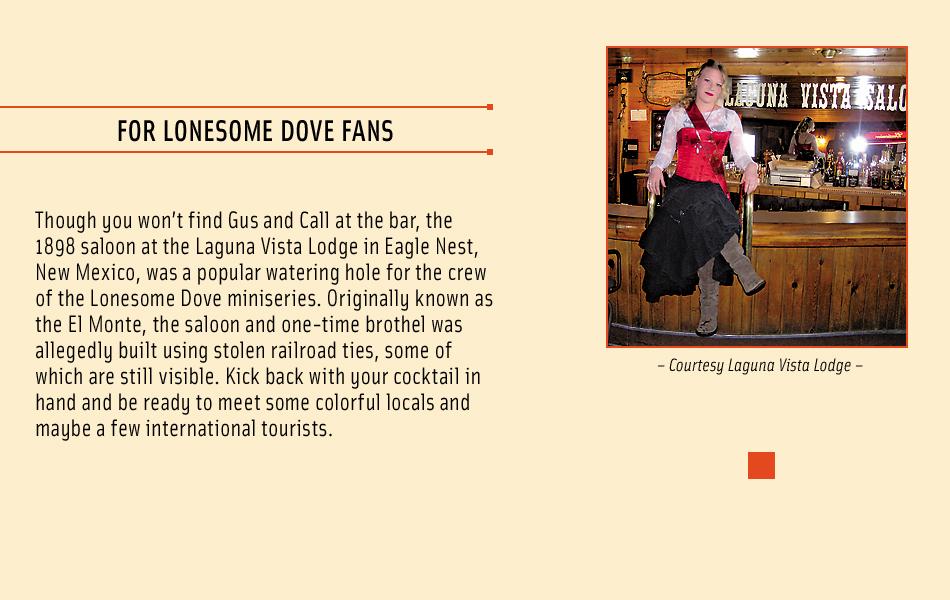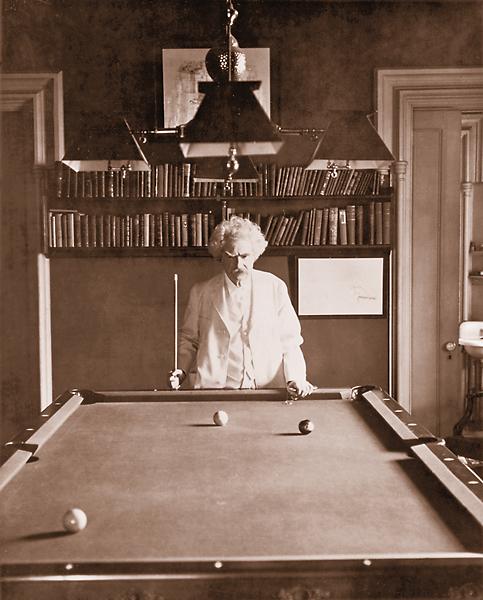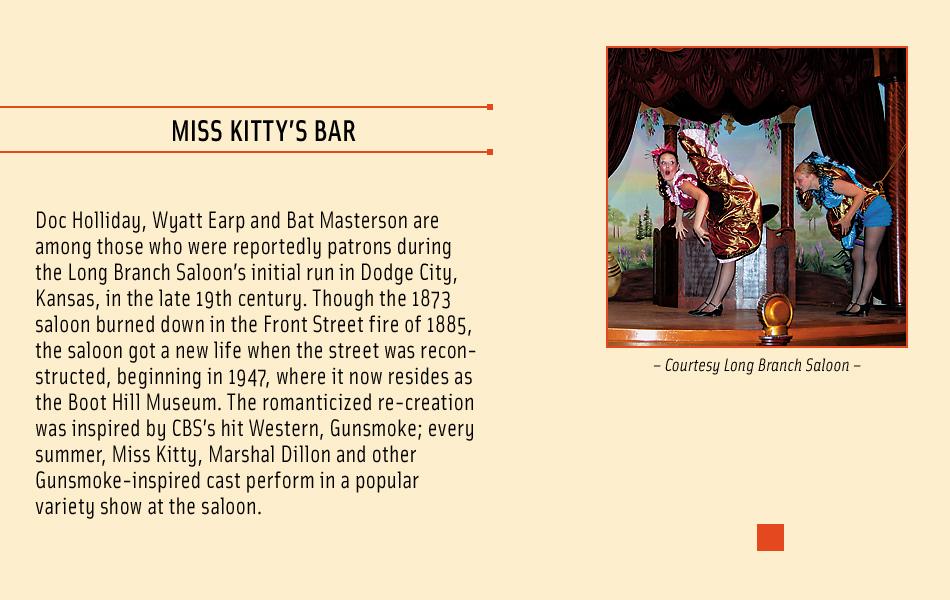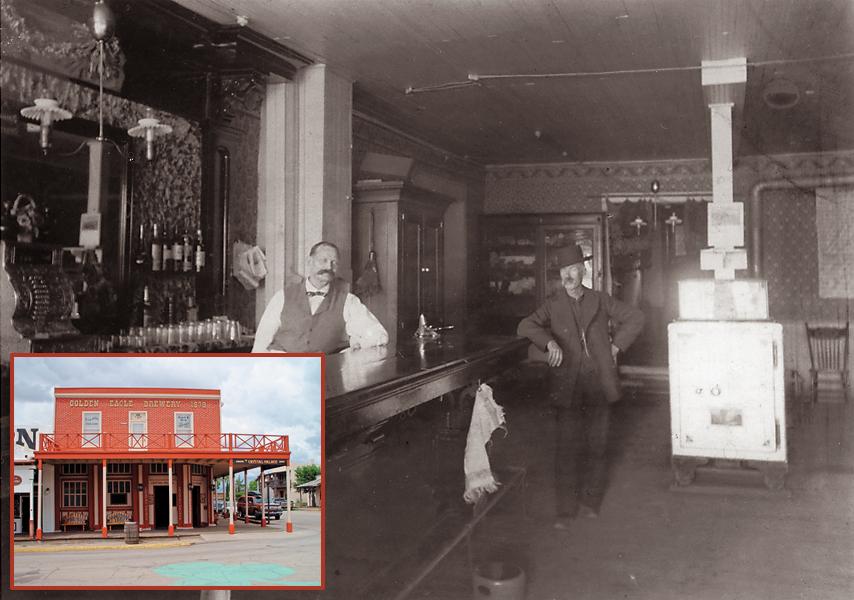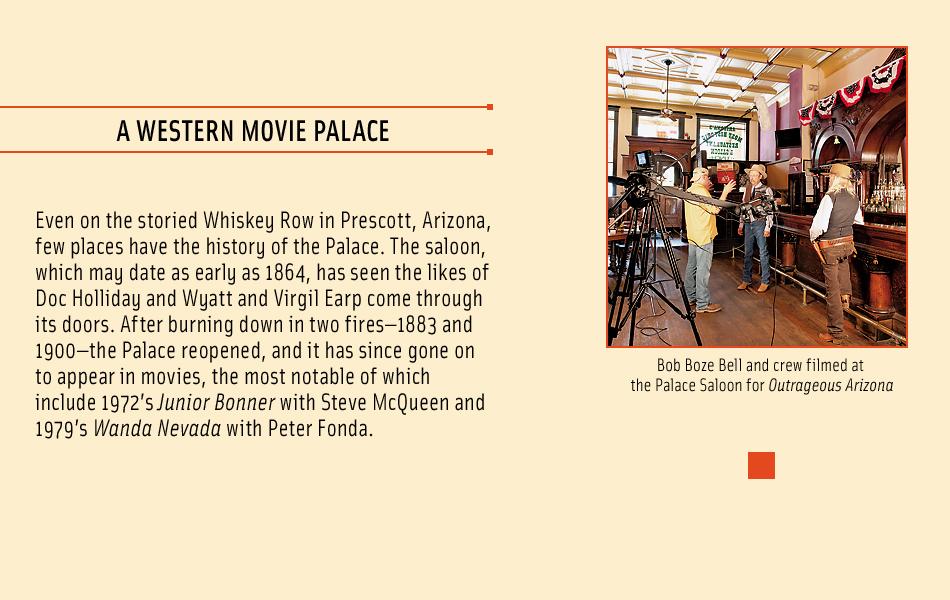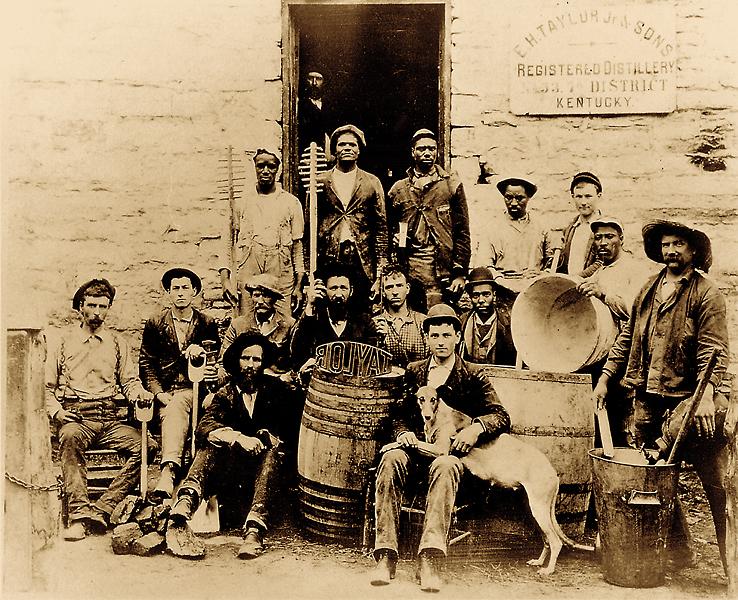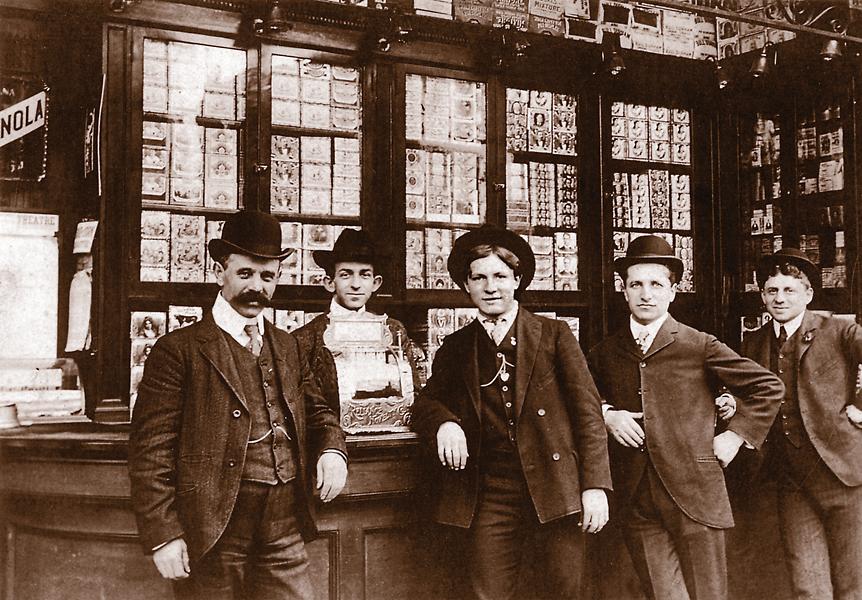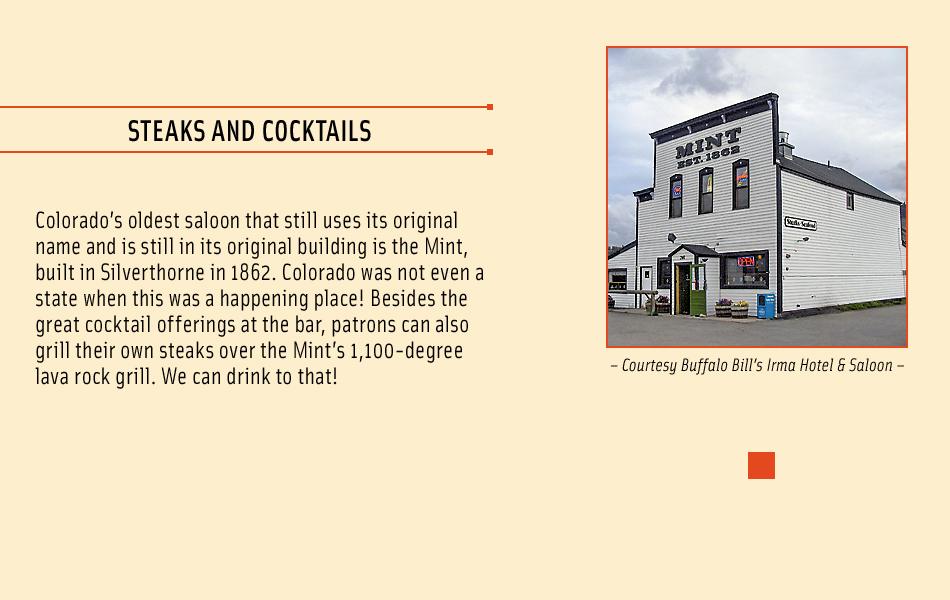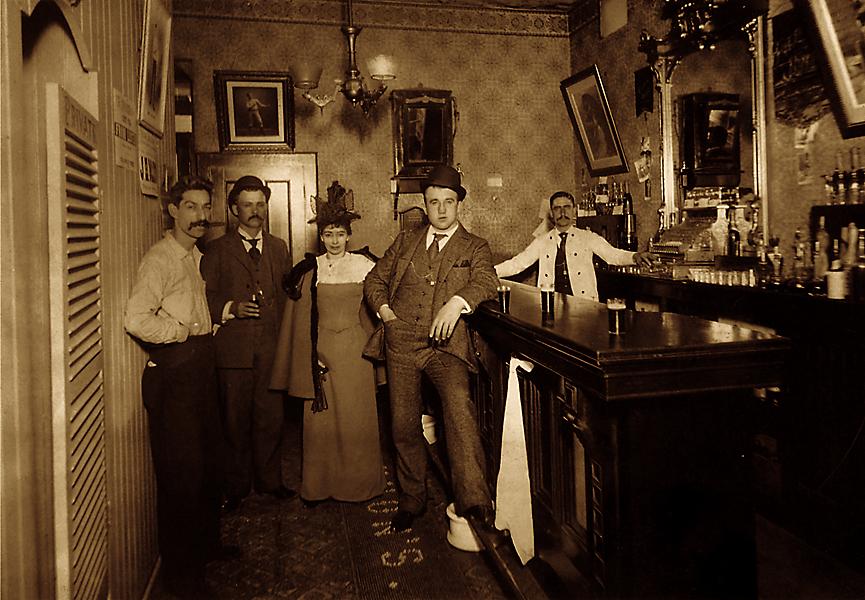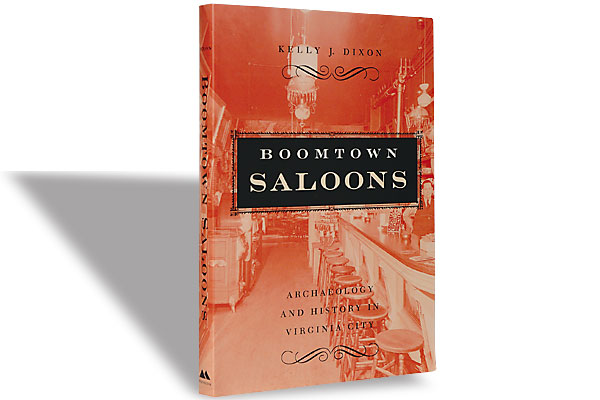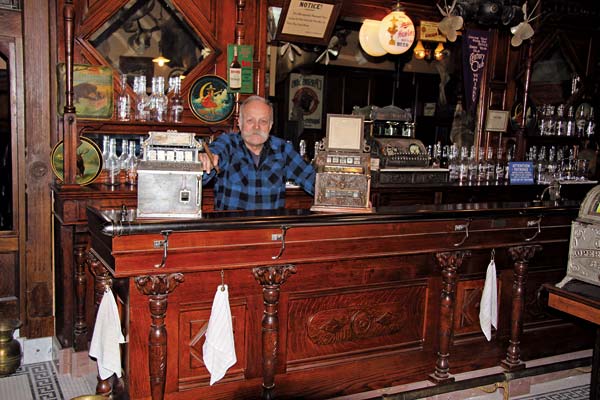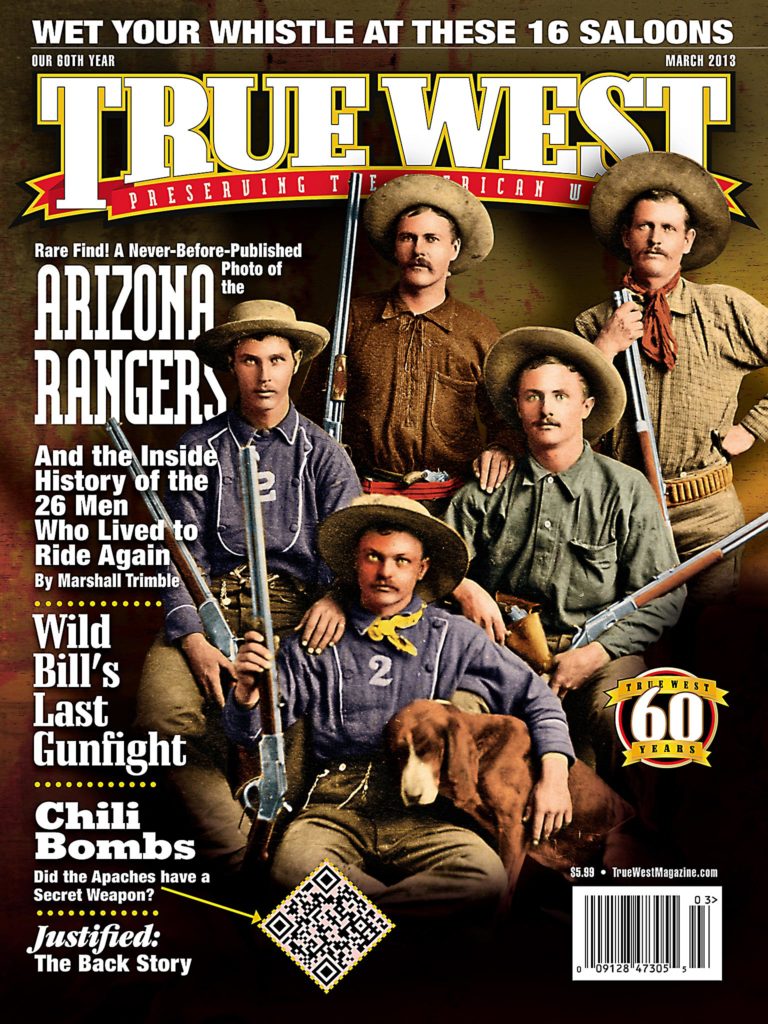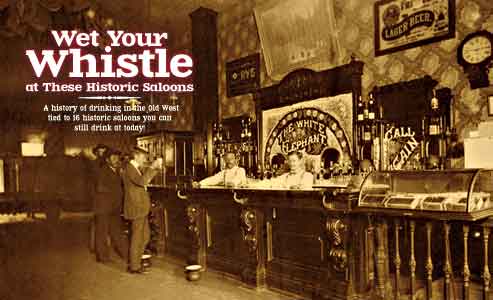 “Saloon openings are all the rage. The Oriental is simply gorgeous and is pronounced the finest place of the kind this side of San Francisco.”
“Saloon openings are all the rage. The Oriental is simply gorgeous and is pronounced the finest place of the kind this side of San Francisco.”
“The bar is a marvel of beauty; the sideboards were made for the Baldwin Hotel; the gaming room connected is carpeted with Brussels, brilliantly lighted, and furnished with reading matter and writing materials for its patrons.
“Every evening music from the piano and violin attracts a crowd; and the scene is really a gay one—but all for the men. To be sure, there are frequent dances, which I have heard called, ‘respectable,’ but as long as so many members of the demi-monde, who are very numerous and very showy here, patronize them, many honest women will hesitate to attend.
When Clara Brown arrived in Tombstone, Arizona, in 1880, she duly noted its saloons like the Oriental were popular and beautiful, but no respectable women dared enter them. Women in Western saloons were the exception, not the rule. The majority of saloons that hosted women were “dance halls” where the “hostesses” or “queens” were doing a horizontal dance!
Tombstone’s Crystal Palace Saloon, which still serves good whiskey to this day, was one of the few saloons that sported a respectable, female faro dealer. Former Tombstone resident John Hancock reminisced about seeing her in the 1880s: “One of the best faro dealers I ever saw was a girl that used to deal sometimes on afternoons for a gambler that went by the name of ‘Napa Nick’ who had a faro bank in the old Crystal Palace Saloon. She was a handsome girl about 21 or 22 years of age and had evidently come from a good family. There was nothing harsh or coarse about her and she was always well-dressed in the prevailing styles but not loud or gaudy, and her diamonds were always appropriate and while they lent their charm to her beauty they were not out of place or seemed to have been put on for show; and the way she could deal faro was a revelation to any old-timer that thought he was pretty slick at the game.”
In frontier boomtowns and cowtowns, a saloon was often the first to open. Life was rough, and folks had little to do after a hard day’s work but drink and chat at the local saloon.
The types of saloons varied, depending upon the town they served. Larger, wealthier towns tended to have sophisticated social clubs, but they had their share of dance halls and hole-in-the-wall places too. Smaller, remote towns usually had a few basic saloons, and some doubled as a community meeting place. Women in small towns could enter saloons without tarnishing their reputations, but this was not the norm. Tucson, Arizona, pioneer C.C. Wheeler remembered, “A woman was seldom seen in a saloon and, in fact, the only time women appeared where gambling was conducted, or liquor sold, was during Fiesta season.”
Being a saloon owner or bartender was quite respectable. “The cheapest and easiest way to become an influential man and be looked upon by the community at large was to stand behind a bar, wear a cluster diamond pin and sell whiskey. I am not sure but that the saloon-keeper had a shade higher rank than any other member of society. His opinion had weight…,” wrote Mark Twain, who lived in Virginia City, Nevada, during the great Comstock silver rush in the 1860s.
The What Cheer House The What Cheer House and Saloon in Columbia, California, was in business in 1857 and still serves drinks to this day. But even nice saloons like What Cheer had their share of rowdy patrons. In August 1876, Peter Arden became inebriated and an officer was called to escort him out. Arden apparently wasn’t finished at the saloon and began hurling “very vile language” toward the officer. He was promptly arrested. About 45 days later, Thomas Coleman, under the influence of “tarantula juice,” broke a window at the What Cheer. Like Arden, he was arrested and pleaded guilty.
Fort Worth, Texas, was a rowdy cowtown when pioneer Andre Jorgenson Anderson, a Norway native, settled there in 1874. “The White Elephant was the most magnificent place in Fort Worth those days,” he recalled. “It was located between Third and Fourth Streets on Main. It was a saloon, gambling house, and restaurant. There were no queens connected with the White Elephant. Before its opening, the place was advertised to be one of the finest combination saloons, gambling houses, and restaurants, without any exceptions. Those days ladies did not frequent saloons, but the good ladies of Fort Worth could not resist taking a look at the White Elephant during its opening night, and a large number came to look at the place….” Today, you can still throw back a drink at the historic establishment.
Another Texas saloon, the Jersey Lilly, may not serve drinks today, but it’s worth a stop just to relish in its history. The Jersey Lilly made the national news frequently, not because of its drinks or brawls, but because of its owner. Judge Roy Bean was a colorful character who dispensed his own frontier justice. He was judge, jury and coroner in Langtry, Texas. If found guilty, and most were, you paid a fine, upon threat of being hanged. He was creative at earning a living as the judge; he even once fined a corpse. In 1897 Bean examined the body of a man who fell to his death. The man had a revolver and $40 on him. Since it was against the law to carry a concealed and loaded gun in Texas, Bean posthumously fined the man $40 and confiscated his weapon. Bean stated, “…just because this gentleman got it into his head to get killed, I don’t mean to let him offend the peace and dignity of Texas.”
East of Langtry, in San Antonio, Albert Friedrich opened the Buckhorn Saloon in 1881 (it has moved a few times since). Savvy businessman Friedrich quickly learned to accept horns and antlers in place of money from cashless cowhands. Still, many of his customers managed to pay with cash, leaving
the Buckhorn vulnerable in 1902, when $200 was stolen from the
cash box behind the bar. The robbers didn’t take one antler! Today, the saloon’s cherrywood back bar features beers on drafts and prickly pear margaritas.
Buckhorn was the name of another saloon, but this one was in Denver, Colorado. Henry “Shorty Scout” Zietz, who once rode for Buffalo Bill Cody, opened the Buckhorn Exchange in 1893 on Osage Street, directly across from the Rio Grande Railroad yards. Every Friday, railroad employees walked across the street to “exchange” their paychecks for gold. In return, Zietz offered each one a token for a
free lunch and a beer. Now in its second century of operation, the saloon caters to both cattlemen and sinners alike.
Up in Buffalo, Wyoming, the Occidental Saloon still attracts town locals, miners and hunters, just as it did when it opened in 1880. The adjoining hotel also hosted some more well-known guests, including Theodore Roosevelt, Calamity Jane, Tom Horn, Butch Cassidy and the Sundance Kid, and Western novelist Owen Wister. Despite these famous guests, the saloon knew it had to survive on the local trade. It placed an ad that read, “Family Wines…making a specialty of table wine for family use….” You have to wonder how many families actually patronized the saloon?
In Leadville, Colorado, the Silver Dollar Saloon is a nice, cozy place to stop for a refreshment. It opened as the Board of Trade Saloon in 1879. John Morgan ran this silver mining saloon, but by 1898, Joe Gavin had taken over and hired Sam Boyce as his bartender and manager. Gavin trusted his old Cripple Creek buddy to run things, at least until Boyce was “asked” to leave town for speaking out against the Colorado Militia. (He told a barber he hoped the Colorado militia would be killed off by the Spaniards at Manila.) According to The Denver Post, “Boyce was jerked out of the barber’s chair and unceremoniously kicked intothe street.”
All of these historic Old West saloons, and a few others we share here, offer unique characteristics often based on the size of the town, just as was true during the frontier era. Then, saloon interiors ranged from simplistic to elegant. Small town saloon patrons likely found the basics—a bartender, glasses, spittoons and alcohol. In bigger or wealthier towns, saloons were elaborately decorated with mahogany wood, oil paintings, chandeliers and expensive carpets. An endless supply of high-quality whiskey, champagne, cordials, rum, wine and more could also be had. Many offered a reading room with newspapers and periodicals from around the country. A saloon often had a small cigar concession near the entrance. This way, both male
and female patrons could make purchases without actually entering the saloon.
Regardless of what saloons looked like or what drinks they served in the past, many a lonely miner, cowboy or businessman found a haven in them from their daily grind. Folks still find their respites at these historic watering holes to this day.
Sherry Monahan has authored two books on frontier saloons, Tombstone’s Treasure: Silver Mines and Golden Saloons and The Wicked West: Boozers, Cruisers, Gamblers, and More.
Photo Gallery
– Courtesy Roger E. Kislingbury Collection, featured in Saloons, Bars & Cigar Stores (Waldo and Van Winkle Publishing) –
–Mark Twain, in Roughing It
– All photos True West Archives unless otherwise noted; inset courtesy John F. McIntosh of ASU’s College of Architecture & Environmental Design –
Commodore Richard Taylor built the one-story stone house known as Riverside in 1792; shown here are some of the whiskey distillers working for Edmund Haynes Taylor Jr. after the Civil War. The house is still on the site of the Buffalo Trace Distillery in Frankfurt, Kentucky.
– Courtesy Buffalo Trace Distillery –
– Courtesy Roger E. Kislingbury Collection, featured in Saloons, Bars & Cigar Stores (Waldo and Van Winkle Publishing) –
– Courtesy George Giumarra Collection, featured in Saloons, Bars & Cigar Stores (Waldo and Van Winkle Publishing) –


